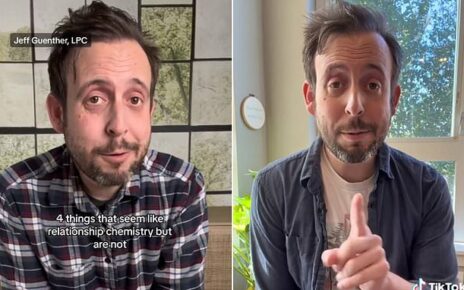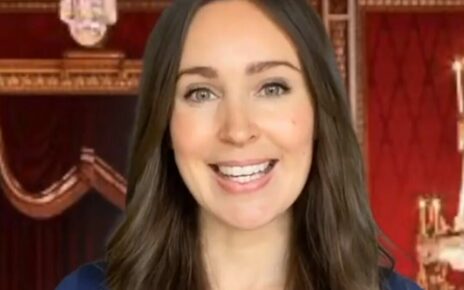Before the COVID-19 pandemic New Zealand was preparing a series of measures to expand on its reputation as one of the world’s top-flight filming locations. Generous subsidies, Oscar-winning crafts teams and stunning locations had made it the destination of choice for “Mulan,” “Lord of the Rings” “Mission Impossible: Fallout” and “The Power of the Dog.”
While the country coped strongly with the virus, disease control measures isolated the country and caused uncomfortably long lockdowns in Auckland, its biggest city and principal film-making hub. The effect of COVID and lockdowns was to overshadow the infrastructure improvements and industry developments that continued apace.
With two new studio complexes now in operation and location shooting already back to record levels, Auckland is keen to let the world know that it is not only open for business. It is busier and better. Variety spoke to Screen Auckland’s Jasmine Millet.
Seems that Auckland is really busy all of a sudden.
We had our busiest month of filming applications on record in April. Permit applications for April 2021 and 2022 are averaged out and have increased by 140% on the pre-COVID period of 2018 to 2020. We’ve never been busier any time in the last five years. It is film, TV commercials, all filming activities which require a location permit [and excludes in studio work]. In that period between the two COVID lockdowns we picked up a 70% increase.
And for those wanting to shoot in studios there are more options?
Since September 2019 we’ve had a new studio facility that has popped up, which is called X3 Studio. It includes four big stages, two of which can join up to become a mega stage, which is fantastic, because we didn’t have anything like that.
Auckland Film Studios, which has been around for decades and has been the workhorse of the industry here and had plenty of international production, but it only had one large stage. So, in the intervening couple of years, with the government’s support, and Auckland Council partnering, it has two new stages which should be online in November of this year. These are 2,000m2 each, (21,528 square feet, which means total stage space available at AFS will be approximately 7,600 square metres (81,500 square feet), more than double what they had in the past.
Then, not very far away, in the neighboring suburb, Studio West, which has also been around for a long time, but not with any large infrastructure, has almost completed the build of a 3,400 square metre stage to complement the existing boutique space. It is a proper purpose-built stage, that’s almost ready, and has transformed what was pretty humble into something major. There’s a possibility that the owner will add a second new stage later.
Does Auckland need that much studio space?
Even with Kumeu [home to “The Meg” and a substantial portion of the new “Avatar” film series] which added two, 220 500 square foot stages, we were still really constrained for space during 2017 and 2018. The demand was still more than we could meet. We have always used overflow capacity with warehouse conversions and alternative spaces to manage the ebbs and flows of demand, but the main thing is to be able to move away from having to rely on those converted spaces and to have purpose-built solid, permanent facilities. These can mop up demand, but also open us up to handle multiple international projects of a certain size.
How difficult had things become under COVID?
We managed to keep filming through a lot of the last two years. There was an early success story coming out of that first wave. We had a pretty bumper year after that first lockdown of March 2020. We had protocols in place early, which government endorsed. We had all industry and agencies singing from the same hymn sheet. And we thought we were on to a good thing.

But things got complicated around August of last year once the delta variant came into the country. Auckland went into lockdown for four months from August to December 2021. And we had a regional border around Auckland [between] the rest of the country. We still did manage to film production going, but not big productions. That became our most difficult period.
“Avatar” was back filming again before the end of last year. They found their way through it. But even for productions that were able to keep filming, there was a whole set of complications. If you were trying to get crew or people carrying things out of our region, even to Wellington or the rest of the country, they had difficulties in doing so.
When did Auckland turn the corner?
We switched our way of managing COVID risks in late November, beginning of December last year, from what had been a four-level alert system to a traffic light system, based on the notion that vaccination was now widely available.
The handling of risk was a totally different proposition from what it had been before. And the traffic light system explained exactly what was allowed and what was not.
The screen production industry, including its international clients, could see that lock downs were no longer on the horizon and get back to what we always do, which is make calculated assessments of whether it’s a good time to do something. And it’s been increasingly busy ever since.
Was the restart all about local productions?
We had both, local and international. because we had some repeat series, such as [DC Entertainment and Netflix series] “Sweet Tooth,” which had a really successful first season. And they were ready to go for the next season. Returning series know the landscape, have their local connections.
And yes, domestic [TV shows] and television commercials, of which we have a lot in Auckland, were quick to come back. The smaller budget [productions] actually needed to wait until they’ve got their budgets [reassembled] and the means to press play.
Is there any indication that any of the streamers will take a long term lease in New Zealand, as they have in London and Korea?
Having more infrastructure has got to make that more of a possibility. Netflix, doesn’t have a permanent base in New Zealand, but they’re making a lot of content here. I’m going to be interested to see how that model develops over the next couple of years. But we like having a range of players in at once, doing what works for them in our environment.
Is Auckland set up for virtual production?
We are, though there’s potential for more. Productions in the last couple of years have been using VP techniques while they’ve been here. “Sweet Tooth” used extensive VP models. We’ve got a camp. We’ve got companies that are really heavily invested in the LED technology, and our VFX companies are really embracing it as well. And there is a lot of work and preparation of a future talent pipeline by the likes of Auckland University of Technology (AUT), which is partnering with the industry.
Source: Read Full Article

